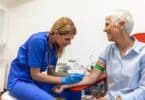Parenting is often a journey of anticipating the future and protecting your family from potential harm. But what if the most impactful way to secure a healthy future for your family lies in something as simple—and as powerful—as cancer prevention? A new study led by researchers at the National Institutes of Health (NIH) and published in JAMA Oncology highlights the profound impact of prevention and screening in reducing cancer mortality. For parents, this research highlights actionable insights that can shape family health and even save lives.
The study reveals that over the past 45 years, prevention and screening efforts have averted more deaths from five major cancers—breast, cervical, colorectal, lung, and prostate—than treatment advancements. This powerful finding serves as a reminder that proactive steps, like promoting healthy habits and regular screenings, are essential tools in safeguarding not just individual health but the well-being of the entire family.
The Power of Prevention
Prevention alone accounted for the lion’s share of lives saved in this study, particularly through tobacco cessation efforts, which prevented 3.45 million lung cancer deaths. For parents, this is a call to action: fostering a smoke-free environment at home and encouraging children to stay away from tobacco products can have far-reaching consequences.
“Eight out of 10 deaths from these five cancers that were averted over the past 45 years were due to advances in prevention and screening,” said Dr. Katrina A. B. Goddard, one of the study’s co-lead investigators. This statistic underscores the importance of integrating healthy behaviors into daily family life. Whether it’s encouraging balanced nutrition, promoting physical activity, or staying up-to-date on vaccinations.
Screening: Early Detection Saves Lives
Screening has proven to be an invaluable tool in reducing cancer deaths. For parents juggling busy schedules, the idea of adding another task to their to-do list might feel daunting. But the study emphasizes how critical these screenings are:
- Cervical cancer: Pap and HPV tests accounted for all of the 160,000 deaths averted. These tests are essential for detecting precancerous conditions early.
- Colorectal cancer: Screening and removal of precancerous polyps were responsible for 79% of the 940,000 deaths prevented.
- Prostate cancer: PSA testing contributed to over half of the 360,000 deaths averted.
For moms, mammograms have been instrumental in saving lives, with treatment advances and screening each playing vital roles in preventing 1 million breast cancer deaths since 1975.
These findings emphasize the importance of regular checkups—not just for parents, but for teens and young adults as they age into risk categories for certain cancers. Discussing family health histories and scheduling screenings as recommended can be life-saving steps.
A Family Approach to Health
This study serves as a reminder that health strategies are most effective when prevention, screening, and treatment work together. Families can adopt practices that reduce risk factors, such as avoiding tobacco, embracing a diet rich in fruits and vegetables, and maintaining active lifestyles.
Breaking Barriers in Access
While the study paints a hopeful picture, it also highlights disparities in access to prevention and screening. Families in underserved communities often face barriers to these life-saving tools and that needs to change.
Dr. Philip E. Castle, another co-lead investigator, emphasized the importance of these efforts: “We need to optimize the uptake and use of prevention and screening so that all Americans can benefit, especially underserved populations.”
As parents, understanding the role prevention and screening play in reducing cancer mortality equips us with the knowledge to make informed decisions for our families. This study is a testament to the power of proactive health measures. By embracing these strategies, we can reduce cancer risks not only for ourselves but also for our children and future generations.
This is your call to schedule those screenings, have open conversations about health, and make prevention a family priority. After all, the best way to protect our children’s futures is by taking care of our own health today.
Related Articles:







